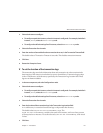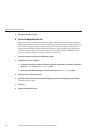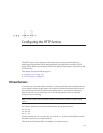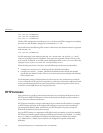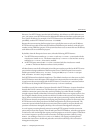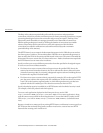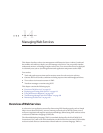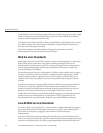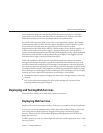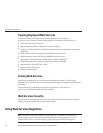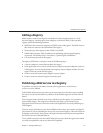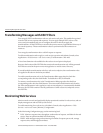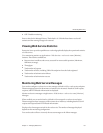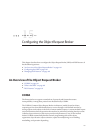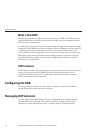
service endpoints, along with corresponding WSDL descriptions, and clients. A JAX-RPC
based web service can interact with clients that are not based on Java. Similarly, a JAX-RPC
based client can interact with a non-Java-based web service implementation.
Java API for XML registries (JAXR), a Java API for accessing business registries, has a exible
architecture that supports UDDI, and other registry specications (such as ebXML). A JAXR
client, which can be a stand-alone Java application or a J2EE component, uses an
implementation of the JAXR API provided by a JAXR provider to access business registries. A
JAXR provider consists of two parts: a registry--specic JAXR provider, which provides a
registry-specic implementation of the API, and a JAXR pluggable provider, which implements
those features of the API that are independent of the type of registry. The pluggable provider
hides the details of registry-specic providers from clients.
SOAP with Attachments API for Java (SAAJ) enables developers to produce and consume
messages conforming to the SOAP 1.1 specication and SOAP with Attachments note. SAAJ
provides an abstraction for handling SOAP messages with attachments. Advanced developers
can use SAAJ to have their applications operate directly with SOAP messages. Attachments may
be complete XML documents, XML fragments, or MIME-type attachments. In addition, SAAJ
allows developers to enable support for other MIME types. JAX technologies, such as JAX-RPC,
internally use SAAJ to hide SOAP complexities from developers. SAAJ enables:
■
Synchronous request-response messaging: the client sends a message and then waits for the
response.
■
One-way asynchronous messaging: the client sends a message and continues with its
processing without waiting for a response.
Deploying and Testing Web Services
Enterprise Server enables you to easily deploy and test web services.
Deploying Web Services
Deploy a web service in an enterprise archive (EAR) just as you would an enterprise application.
A web service can also be implemented by a POJO (plain old Java Object). Deploy a POJO web
service using the auto-deploy feature by dragging and dropping it into the auto-deploy
directory. Enterprise Server will automatically generate the appropriate web XML les and
deploy the web service.
In Admin Console, you can view a list of deployed web services under Application Server > Web
Services | General.
DeployingandTestingWebServices
Chapter14 • ManagingWebServices 155



